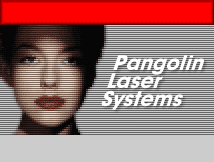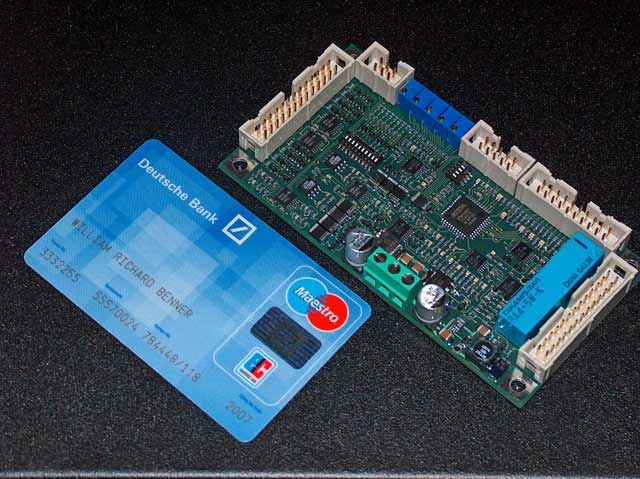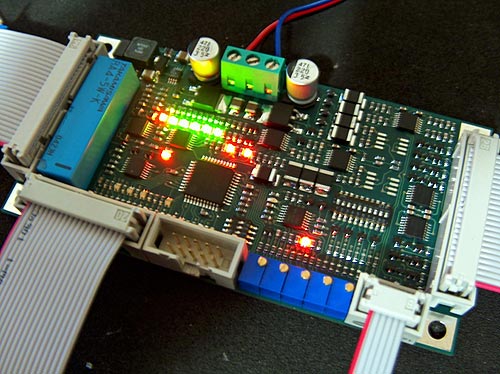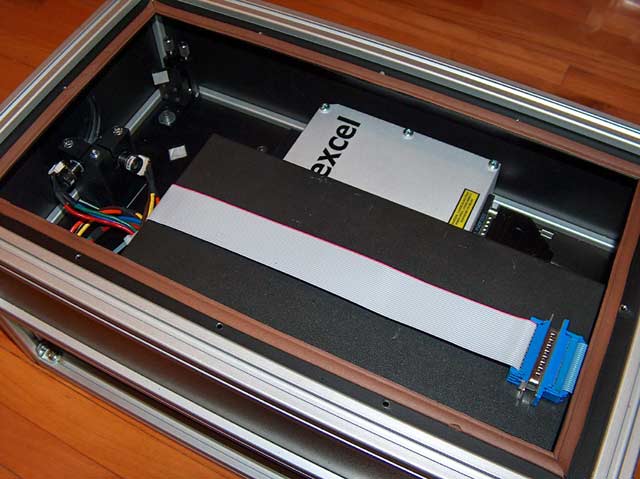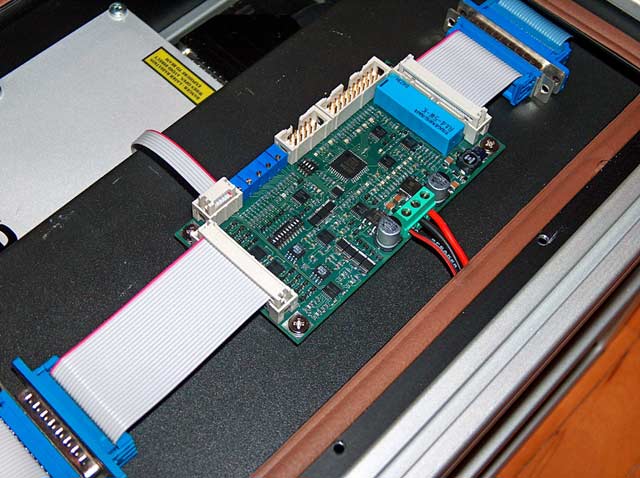|
|
PASS: Professional Audience Safety System |
|
|
The most beautiful and unique laser show effect is audience scanning. To be inside the light, to have colors and shapes wash over you in time to music - there is no other experience like it. Audience scanning made
safer
|
|
|
|
How to ensure audience safetyPASS continually monitors the laser power, scanner signals, and other projector-related parameters. If everything is working safely and correctly, then PASS will never need to interrupt the light output from the projector. However, if there is a minor problem with the show programming such that the beam is traveling too slowly, the beam is scanning an area that is too small, or the beam stops scanning altogether, PASS will momentarily interrupt the light coming from the projector, by manipulating the color and blanking signals. Once the show resumes safe operation with the laser beam moving sufficiently fast so as to not present a hazard, PASS will allow the light to resume coming out of the projector. The PASS hardware and software does this in a very intelligent way so as to not destroy the intended visual effect. It is only in the event of a major problem detected within the projector (or within PASS itself) that PASS will take drastic action. PASS aggressively and vigorously protects the audience from system failures.
|
|
|
|
Patented, award-winning technology that goes beyond scan-fail circuitsPASS is significantly more advanced than simple "scan-fail" products. It went through ten years of R&D, and two years of U.S. government scrutiny to determine that it provides true safety. PASS was also reviewed by ILDA judges in 2007 and received the first place Fenning Award for Technical Achievement. Then, finally in July 2010, PASS was granted a US Patent. All of the systems within PASS were designed such that there is redundancy. That is, there are always at least two circuits monitoring any condition (power supply, light output, scanner dynamics, and system logic). For maximum reliability, each of these circuits are implemented in different ways, thus, making it extraordinarily unlikely that they would fail in exactly the same way at exactly the same time. And the output of these circuits are polled, such that all circuits must agree that there is a safe condition, in order for PASS to allow light to emanate from the projector. Due to its redundant approach, there is no single point of failure that permits hazardous light levels to reach an audience. If any parameter is unsafe, or if a monitoring circuit within PASS fails, it will go into a safe mode where laser light ceases. In fact, PASS will maintain safety even in the face of five simultaneous system failures!
|
|
|
|
Not just for U.S. showsPASS is not just for the U.S. It is for anyone who needs to prove to a client, an insurance company, or a government inspector that an audience scanning show will not exceed user-set safety limits. Having undergone intense scrutiny by the laser safety community, and being the safety system within the first projector to receive a CDRH Variance for European-style Audience Scanning, thus allowing Audience Scanning laser shows to be performed in the United States, we believe that PASS is currently the only credible solution to ensure the continued success of the laser entertainment industry.
|
|
|
|
Easy to install in any projectorPASS consists of two components inside your projector: a credit-card-size circuit board which inserts into the ILDA signal path, and a light sensor just before the scanners. A few additional connections are then made to the scanner position signals and the system power supply. PASS provides five trimpot adjustments to customize its response:
During setup at the show location, simply adjust the horizon and beam power parameters. That's it! PASS works automatically to protect the audience.
|
|
|
|
Intellectual property, and additional information regarding use in the United StatesWhen performing audience-scanning in the United
States, the responsibility to be in compliance with all CDRH and
FDA regulations falls on the purchaser and or integrator of the
PASS system as well as the person performing the actual laser
light shows. An audience-scanning variance application must describe what PASS does, along with the other projector features (for example, no doubt including a lens installed either inside or outside the laser projector to increase divergence) to help ensure audience safety. Finally, the audience-scanning variance must include documentation on how the projector is setup, how measurements are performed and verified, and how the projector is used at each event in ways that ensure audience safety. For the most part, an audience-scanning variance application covers the same things that a more ordinary variance application covers, but it covers them in a more rigorous way. While drafting variances for audience scanning, and for general knowledge of what PASS does and how it works, some people have found it handy to refer to the Patents on PASS. The issued US patent can be found on the USPTO web site, or on Google Patents. It is called "Laser projector safety monitoring system" and is covered by US Patent number: 7,756,174. In Europe, the patent application can be found at the World Intellectual Property Organization web site. It is called "Laser projector for audience scanning" and is covered by number: EP20060733773. In Australia, the issued patent can be on the IP Australia web site. It is called �Laser projector for audience scanning� and is covered by Australia Patent number 2006206400.
|
This page last updated: Wednesday, Januari 29, 2020
